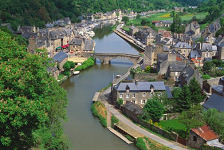The Seven Cultural Descriptors
Used in Community Assessment and Human Geographical Mapping
Cultural Descriptors are qualitative ways to depict everyday routines, current functioning in a community, along with the beliefs, traditions, and stories that exist in the cultural environment. Collectively, they describe what is important and unique about a place. These descriptors are the "markers" that tell insiders as well as outsiders what is characteristic of the human activity taking place within the area.
Publics
A public is any segment of the population that can be grouped together because of some recognized demographic feature or common set of interests. A public may exist currently or at some future date; it may reside permanently in a geographic area, or may live elsewhere and have an interest in the area. Sample publics include ranchers, loggers, tourists, small businesses, industries, miners, Indian tribes, senior citizens, minorities, homemakers, youth, preservationists, and governmental bodies. By identifying publics and characterizing each public's interests, one can understand how segments of a population will be affected differently by decision making on proposed developments. Also, predictions can be made about how changing public interests will influence management in the future.
Networks
A network is comprised of individuals who support each other in predictable ways and have a shared commitment to some common purpose. Networks may be informal arrangements of people tied together for cultural, survival, or caretaking reasons. Networks may also be formal arrangements of people who belong to an organization, club or association, which has a specific charter or organizational goals. Networks may function in a local geographic area or may influence resource management activities from regional or national levels. Examples of informal networks include ranchers who assist each other in times of need, miners who work on the same shift, grass-roots environmentalists, or families who recreate together. Examples of formal organizations include a cattlemen's association, coal mining union, preservationist or snowmobile club. A knowledge of networks citizens form to express their interests is essential for identifying public issues relating to management activities and for monitoring the effectiveness of resource decision making.
Settlement Patterns
A settlement pattern is any distinguishable distribution of a population in a geographic area, including the historical cycles of settlement in an area. This cultural descriptor identifies where a population is located and the type of settlement categorized by its centralized/dispersed, permanent/temporary, and year-round cycles and the reasons for each successive wave of settlement. Knowledge of settlement patterns provides one with a basis for predicting the significance of probable population changes associated with developmental changes.
 Work Routines
Work Routines
A work routine is a predictable way in which people earn a living, including where and how. The types of employment, the skills needed, the wage levels and the natural resources required in the process are used to generate a profile of an area's work routines. The opportunities for advancement, the business ownership patterns, and the stability of employment activities are also elements of the work routine descriptor. A knowledge of work routines can be used to evaluate how alternative types of development will affect the ways people earn a living.
 Support Systems
Support Systems
A support service is any arrangement people use for taking care of each other. Support services occur in an area in both formal and informal ways. Examples of formal support services include the areas of health, education, law enforcement, fire protection, transportation, environment and energy. Examples of informal support activities include the ways people manage on a day-to-day basis using family, neighborhood, friendship or any other support system. One can use the support services descriptor to evaluate how alternative types of development will affect the ways people take care of each other.
 Recreational and Cultural Activities
Recreational and Cultural Activities
A recreation activity is the way in which people spend their leisure time. A cultural activity is the way in which people spend their spiritual time. The recreation and cultural opportunities available, seasonality of activities, technologies involved, and money and time required are aspects of this descriptor. The frequency of local/non-local uses of these resources, the preferences of local and non-local users, and the location of the activities are also included. One can use this cultural descriptor to evaluate how alternative uses of resources will affect the ways people recreate and participate in recreation and cultural activities.
 Geographic Boundaries
Geographic Boundaries
A geographic boundary is any unique physical feature with which people of an area identify. Physical features separate the activities of a population from those in other geographic areas such as a valley that people identify as being "theirs" or a river that divides two towns. Examples of geographic boundaries include topographic and climatic features, distances, or any unique characteristic that distinguishes one area from another. Geographic boundaries may be relatively permanent or short-lived; over time, boundaries may dissolve as new settlement patterns develop and as work routines and physical access to an area change. By knowing the geographic boundaries of a population, one can identify and manage the effects of development that are unique to a particular geographic area.
Cobalt Web Designs